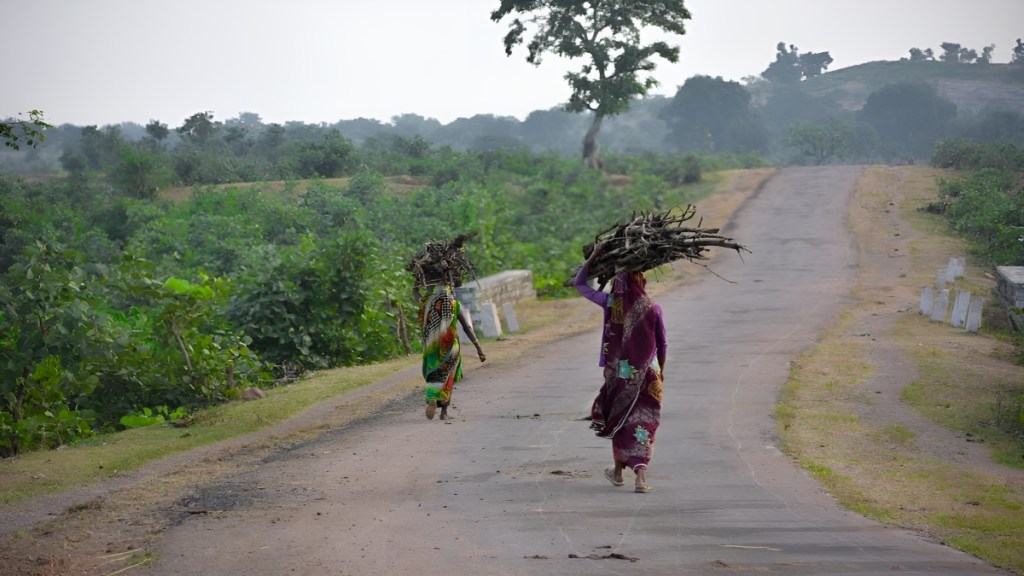By Amlan Mishra and RR Rashmi
Over the past decade, anthropogenic activities have driven a significant increase in global emissions, necessitating urgent action to combat climate change. Among the crucial sectors in climate negotiations, the Land Use, Land-use Change and Forestry (LULUCF) sector has been the subject of contention due to its potential for both mitigation and adaptation. Studies, at a global level, indicate that transforming the land sector and deploying measures in the forest, land and agriculture sector can deliver up to 30 percent of the needed mitigation actions to achieve net zero targets. However, India’s population is highly dependent on the land for their socio-economic wellbeing, especially through the practice of agriculture. There is a need to understand the impacts of designing and implementing land-based climate interventions on the communities dependent on the land for their livelihoods.
Since independence, India has undergone land-use changes over time, focusing on both agricultural expansions to ensure food security and increasing urbanization to accommodate a growing population. The changing land-use change has resulted in anthropogenic green-house emissions, a driver of global temperature rises, while also being significantly affected by climate change.
Land-based mitigation and adaptation measures (collectively land-based climate action) must be undertaken within the context of sustainable development and climate justice. With more than 700 million people dependent on forests and agriculture activities, and with its significant contribution to GDP, the country needs to evaluate AFOLU sector pathways and address any implied socio-economic transition risks for vulnerable stakeholders such as small holder farmers, forest, and other land dependent communities.
Climate action, especially the setting up of solar power plants, would impose a substantial demand on land. Government surveys indicate that 1 MW of solar photovoltaic energy might require up to 1-1.15 hectares a land, and higher estimates reflect that almost 50,000-75,000 km of land would be required to set up solar and wind projects. To put such a number in perspective, this landmass almost reflects 1.7-2.5 percent of India’s total land, a landmass almost equal to the size of Jharkhand.
Such a demand would impose further negative impacts on the existing challenges of food security, agricultural livelihoods, and other economic needs within India. Beyond renewable energy, identifying land-based climate action in both mitigation and adaptation come with risk and challenges, and it is crucial for these goals to offset any potential negative impacts.
Implementing global interventions such as REDD+ (Reducing Emissions from Deforestation and forest Degradation) has raised concerns over issues of socio-economic equality, the rights of local communities, and the erosion of local traditions. Similarly, implementation of Nature-based Solutions may result in trade-offs, like promoting practices with low biodiversity value, such as monocultures, which may not maximize long-term carbon storage. Estimates suggest that mitigation and carbon dioxide removals for meeting net zero needs may require significant nature-based solutions and related land demand. The questions of managing the forests, restoring degraded lands, and preventing their further degradation become hugely pressing in this connection.
Within this context, The Energy and Resources Institute (TERI) and the India Climate Collaborative (ICC) have undertaken research and consultations across India on the various land-based interventions which suggest that the design of the initiatives and polices around land-based climate action need to have a social justice lens. It is critical that land-based climate actions do not aggravate or intensify social, economic, and environmental tensions, involving local communities, and give full regard to diverse stakeholder perspectives.
Land management strategy needs to safeguard communities and nature from the negative impacts of climate change. At the same time, as a finite resource, there is a need to ensure that land is valued, and its long-term value is recognized in intervention and policy design. Business practices like natural capital accounting should be promoted to ensure that land is being used effectively for climate action and socio-economic equity.
Beyond economic practices, prioritizing the justice and equity considerations for both land and vulnerable communities is essential to ensure climate action does not further marginalize already vulnerable communities and instead, promotes their well-being and empowerment. Through representative and inclusive policy making, such communities should be consulted during the design process of climate interventions.
Land is also a resource that transcends local government and administrative borders, and as such, would require better policy co-ordination across the local governments to facilitate effective action. There is a need to strengthen the knowledge of local contexts and facilitate the sharing of knowledge across policy centres of the government, to drive contextual and co-operative policymaking.
Given the varied impacts of climate change on land, and the nature of the economic activities still undertaken in India, it is critical to ensure that transition mechanisms are developed to ensure that critical land-based climate interventions are undertaken in a holistic and sustainable manner in the future.
About the Author: Amlan Mishra, Research Associate; and RR Rashmi, Distinguished Fellow, The Energy and Resources Institute (TERI)
Disclaimer: Views expressed are personal and do not reflect the official position or policy of Financial Express Online. Reproducing this content without permission is prohibited.

